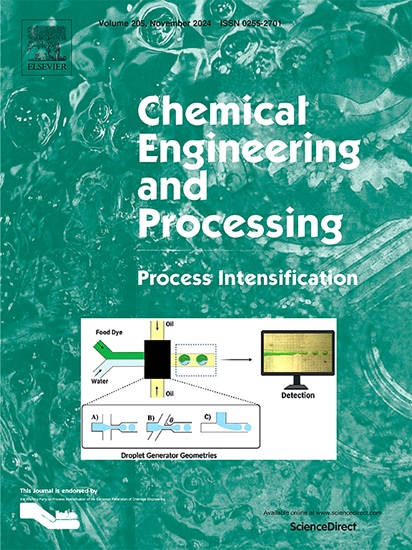从水浴电沉积铁到零碳炼铁:磷对产品纯度和能源效率的影响
IF 3.8
3区 工程技术
Q3 ENERGY & FUELS
Chemical Engineering and Processing - Process Intensification
Pub Date : 2025-05-26
DOI:10.1016/j.cep.2025.110380
引用次数: 0
摘要
电沉积铁是一种极具发展前景的超低碳炼铁技术。但在电沉积过程中,与铁共沉积的铁矿石中有P杂质浸出,导致铁产品质量严重下降。本研究考察了电沉积参数对Fe纯度和电流效率的影响,并通过电化学表征对P-Fe共沉积行为进行了表征。结果表明,电解液中较高的P/Fe比不利于铁的纯度。随着电沉积温度和电流密度的升高,电沉积产物中P含量降低,而Fe电沉积的电流效率提高。较高的H2SO4浓度虽然提高了铁的纯度,但降低了铁的电流效率。这主要归因于P对Fe电沉积的抑制作用和电荷转移阻力。在200 mA cm-2、80℃、4.5 g/L H2SO4条件下,P/Fe比为1:100 (P = 150 mg/L),制备了纯度为99.31%、P含量为0.09%的电沉积铁产物。电沉积产物的结构分析表明,P可能沉积在铁的晶格间隙中,以间隙固溶体的形式存在。本文章由计算机程序翻译,如有差异,请以英文原文为准。

Electrodeposition of iron from aqueous bath towards zero-carbon ironmaking: Effect of phosphorus on product purity and energy efficiency
Electrodeposition of iron from aqueous bath was a promising technology for ultra-low carbon ironmaking. However, the P impurity leached from iron ore co-deposited with Fe in the electrodeposition process, leading to a serious decline of Fe product quality. In this study, the effects of the electrodeposition parameters on the Fe purity and the current efficiency were investigated, and the P-Fe co-deposition behavior was examined by electrochemical characterization. The results showed that higher P/Fe ratio in the electrolyte was unfavorable for the Fe purity. The P content in the electrodeposited product decreased, while the current efficiency of Fe electrodeposition increased with the increase of the electrodeposition temperature and current density. Although higher H2SO4 concentration improved the Fe purity, the Fe current efficiency was reduced. It was attributed to the charge transfer resistance and the inhibitory effect of P on Fe electrodeposition. The electrodeposited Fe product with a purity of 99.31 % and a P content of 0.09 % was prepared at 200 mA cm-2, 80 °C, and 4.5 g/L H2SO4, when the P/Fe ratio was 1:100 (P = 150 mg/L). The structural analysis of electrodeposited products showed that P may be deposited in the lattice interstitial space of iron and exist as interstitial solid solution.
求助全文
通过发布文献求助,成功后即可免费获取论文全文。
去求助
来源期刊
CiteScore
7.80
自引率
9.30%
发文量
408
审稿时长
49 days
期刊介绍:
Chemical Engineering and Processing: Process Intensification is intended for practicing researchers in industry and academia, working in the field of Process Engineering and related to the subject of Process Intensification.Articles published in the Journal demonstrate how novel discoveries, developments and theories in the field of Process Engineering and in particular Process Intensification may be used for analysis and design of innovative equipment and processing methods with substantially improved sustainability, efficiency and environmental performance.

 求助内容:
求助内容: 应助结果提醒方式:
应助结果提醒方式:


